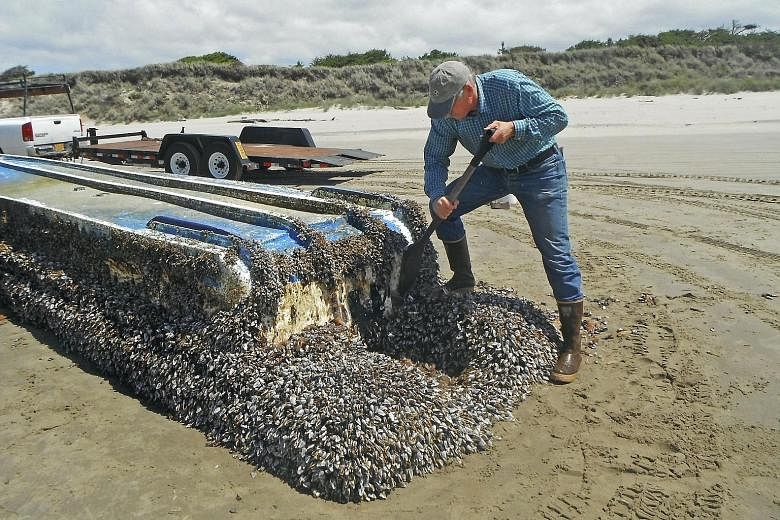TOKYO • The towering tsunami that devastated Japan six years ago also unleashed a very different sort of threat onto the distant coastline of North America: a massive invasion of marine life from across the Pacific Ocean.
Hundreds of species from Japan's coastal waters - mostly invertebrates such as sea anemones, crabs and mussels - were carried across the world's largest ocean on floating debris from the disaster, said a study published in academic journal Science on Thursday .
To the surprise of scientists, the sea creatures had survived crossings that in some cases had taken years. They had adapted to an open ocean where food was scarcer than in rich coastal waters, and they were also able to reproduce before reaching the North American coast.
The scientists said it is too early to tell how many of these tiny invaders have gained a foothold in North American waters, where they could challenge or even displace native species.
While such "rafting" of animals across oceans happened in the past, the sheer number of organisms sent across the Pacific by the enormous earthquake and tsunami on March 11, 2011, which left more than 18,000 people dead or missing in Japan, was unprecedented.
This was possible because the creatures rode on debris - made of materials such as plastic and fibreglass - that proved durable enough to drift thousands of miles, and stay afloat for years or even decades.
"We have created a new ecological process, the process of mega-rafting," said professor of biology Steven Chown at Monash University in Australia, who was not involved in the study, but wrote a commentary that also appeared in Science. "The development of materials that can float for ages, and the rising levels of seas due to climate change, make the possibility of these events larger and larger."
This flotsam ranged in size from motorcycle helmets to entire fishing boats and even larger objects, teeming with living sea animals native to the coastal waters of Japan, but foreign to North America.
To conduct the study, the scientists relied on more than 200 volunteers to find and examine some 634 pieces of debris that washed ashore from 2012 to earlier this year. Tests on the creatures showed that they had no traces of radioactive contamination from the nuclear accident at Fukushima caused by the tsunami.
One of the first pieces of tsunami debris that appeared was a floating dock that washed ashore in Oregon, in the Pacific north-west, in June 2012. It was carrying a diverse mini-ecosystem of more than 120 different species. "After that, we got a steady stream of reports of boats, buoys and other debris, all with Japanese markings, and all carrying an amazing cross section of Japanese sea life," said one of the study's co-authors, professor emeritus of marine sciences James Carlton at Williams College.
NYTIMES

